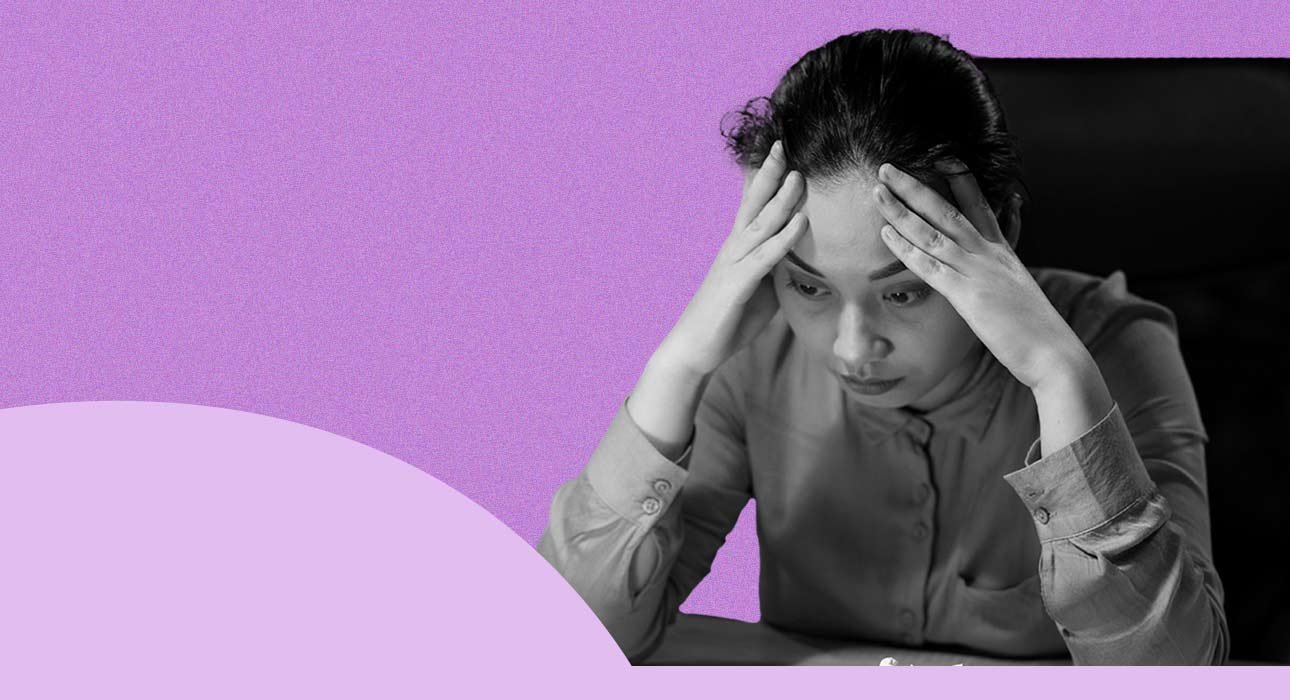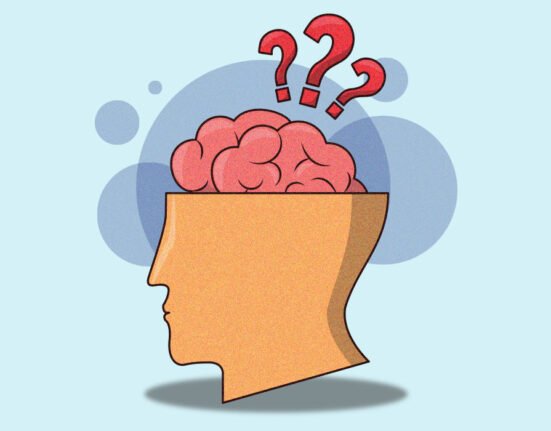Mental health treatment is a particularly demanding discipline that demands around-the-clock availability of services. Patients with acute psychiatric symptoms, suicidal ideation, or behavioural emergencies cannot be kept waiting; they require services at all times. To provide them with such uniform care, working professionals such as nurses, psychiatrists, psychologists, and social workers would opt to work flexible shifts with rotation between day and evening and night shifts. While continuity of treatment is ensured, it also imposes a great toll on staff.
Unlike the usual day labourers, rotation staff have breached bodily rhythms, constant exhaustion, and disjointed social lives. The emotional intensity of mental work health is responsible for these, exposing workers to a host of psychological and physical illnesses. This essay discusses the impact of non-standard shift work on the mental well-being of mental health care workers. It reviews three important areas: causes of these effects, implications on people and organisations, and interventions to enhance resilience and protect staff well-being.
Contributors to Low Well-Being
1. Circadian Rhythm Disturbance
The human body possesses an innate circadian rhythm, a rough 24-hour cycle governing alertness, hormone secretion, and sleep–wake patterns. Day-to-night shift rotations disrupt this cycle, and one experiences a condition akin to perpetual jet lag. Because rotations never last long enough for the body to fully adapt, the staff remains in a position of ongoing misalignment. Misalignment destabilises mood, compromises cognitive vigilance, and erodes the consistency of emotional control (Wright et al., 2013).
2. Sleep Restriction and Fragmentation
The most direct effect of irregular shifts is probably sleep deprivation. Workers finishing night shifts typically get only four to six hours of daytime sleep, disrupted by noise, light, or family obligations. Morning shifts intrude on typical sleep patterns, and “quick returns” between shifts leave little opportunity for full recuperation. Cumulative sleep debt wears down emotional patience, makes individuals more sensitive to stress, and reduces concentration, putting one in a vulnerable psychological position where professional judgment is impaired (Åkerstedt et al., 2017).
Read More: Managing Workplace Stress: Expert Tips for a Balanced and Productive Life
3. Misaligned Light Exposure
Lighting is an essential circadian rhythm regulator. Night work under artificial light artificially prolongs wakefulness, while morning sunlight exposure after a shift inhibits melatonin and interferes with day sleep. Lack of daylight on free days leads to mood lability and even depressive-like behaviour (Boivin & Boudreau, 2014).
4. Emotional Demands and Moral Distress
Mental health professionals manage risky situations such as suicidal risk, self-harm, acute psychosis, and aggression. At night shifts, when the numbers are fewer and there’s limited availability of resources, response efficacy is low. This tends to trigger moral distress—when professionals feel they cannot provide the care they think is needed. Combined with tiredness, this fuels frustration, guilt, and self-blame, which degrades resilience (Rushton et al., 2015).
Read More: The Signs and Symptoms of Psychosis: How Does Psychosis Develop
5. Workload Volatility
Night shifts vary from periods of prolonged still observation to urgency bursts. This uncertainty strains attention, with members needing to remain alert under boredom while responding immediately to urgency. The mind struggles with managing vigilance under such conditions, involving a higher risk of vigilance lapses, mistakes, and psychological stress (Dorrian et al., 2011).
6. Staffing Ratios and Responsibility
Fewer staff at night means fewer numbers and fewer opportunities for high-level monitoring. Junior staff are forced to make tough decisions, engendering fear and worry about errors. Isolation evokes stress and lowers confidence (Flo et al., 2013).
7. Unpredictability and Loss of Control
Shift rosters are typically published on short notice, and therefore, employees can’t schedule social lives, family commitments, or rest. Low control of the work schedule has a strong correlation with depressive symptoms, burnout, and helplessness (Karhula et al., 2018).
8. Commuting Fatigue and Safety Issues
The commute from a night shift occurs in the circadian trough, when the member is at their most sleepy. Most workers experience drowsy driving and near-miss crashes, which create fear and anxiety daily. Physical danger of driving under a compromised condition adds to the psychological cost of shift work (Connor et al., 2002).
9. Chronotype Mismatch
People naturally differ in their biological preference to be an early riser or a late riser. “Morning larks” are intensely disturbed by night shifts, while “night owls” have trouble with early mornings. Schedules of work that ignore these chronotypes elevate employees to higher sleep debt and worse adaptation, reinforcing psychological stress (Vetter et al., 2015).
10. Family and Caregiving Burdens
Irregular work schedules conflict with family responsibilities, primarily childcare and elder care. These pressures are disproportionately placed on women, who may have a larger caregiving load. Professional-responsibility vs. personal-commitment conflict creates tension, guilt, and burnout (Booker et al., 2020). Over time, this role strain is a primary source of burnout.
11. Nutrition and Stimulant Dependence
Irregular meals are consumed by shift workers with minimal healthy food at late hours. Vending food, takeaways, and substances like caffeine are the routine. Alcohol or sedatives are countermeasures to night shifts for some members of staff. The habits disrupt mood, digestion, and overall well-being, fueling the cycle of fatigue and stress (Gupta et al., 2020).
12. Organisational Culture
Staff resilience is also dependent on cultural norms in mental health care facilities. Institutions that hold endurance as a value and stigmatise conversations about receiving tiredness force employees to employ unsafe coping strategies. Organisations that embrace fatigue, practice supportive supervision, and normalise conversations about exhaustion are protective environments that protect against stress (Shanafelt & Noseworthy, 2017).
Effects of Irregular Shifts Timetable
1. Psychological Effects
The most apparent effects are psychological. Staff routinely complain of heightened anxiety, irritability, mood swings, and depression. Chronic sleep deprivation reduces the brain’s emotional control capacity, and moral distress evokes guilt and disillusionment. Burnout, consisting of emotional exhaustion, depersonalization, and diminished feelings of competence, occurs in mental health professionals working rotations (Maslach & Leiter, 2016). Over time, these experiences have a possibility of resulting in clinical mental disorders like major depression and generalised anxiety disorder (Virtanen et al., 2018).
2. Cognitive and Performance Impairments
Fatigue diminishes attention, working memory, and the accuracy of decision-making. When safety hinges on subtle judgment in mental health settings, compromised cognition is not just a bother but a risk to patients and workers. Workers can miss warning signs for suicide, misread patient actions, or mishandle emergencies. Such mistakes not only imperil patient safety but also decrease workers’ guilt and stress, feeding cycles of psychological damage (Lockley et al., 2007).
3. Physical Consequences to Health
Shift work rotation is predicted to increase the risk of cardiovascular disease, obesity, diabetes, and gastrointestinal illness. Irregularity of consumption and disturbance of sleep lead to metabolic dysregulation (Kecklund & Axelsson, 2016). Physical deterioration facilitates ongoing psychological stress, as employees must deal with illness personally and still deliver high-stakes care.
4. Social and Relational Strain
Off-schedule shifts interfere with personal relationships. Workers are likely not to attend family reunions, school activities, and social activities, and therefore become lonely. Spouses and children are likely to perceive practitioners as emotionally unavailable, which compromises family relationships. Social isolation elevates loneliness and contributes to depression after some time (Kalmbach et al., 2015).
5. Organisational Impact
These have broader effects on organisations. High turnover, absenteeism, and burnout levels among mental health professionals erode service quality and continuity. Teams become dispersed, morale decreases, and patient care is adversely affected. Replacement staff recruitment and training are expensive, further pressuring already strained mental health services (Dyrbye et al., 2017).
Improving Well-Being Among Mental Health Care Staff
1. Optimising Shift Design
Rotas can be arranged to minimise damage. Forward-rotating shifts from day to evening to night are less difficult to habituate than reverse rotations. Restricting consecutive nights on duty and providing acceptable rest breaks between shifts minimises the chance of extreme fatigue. Where feasible, working in conformity with individual chronotypes enables workers to work according to their natural circadian rhythm (Sallinen & Kecklund, 2010).
2. Promoting Healthy Sleep Habits
Education in sleep hygiene, like techniques including blackout drapes, white noise, and regular sleep habits, can be offered by organisations. Hospital sleeping quarters can support napping between extended night shifts to enhance alertness and performance. Restricting “quick returns” and ensuring a minimum resting period are key practices (Geiger-Brown et al., 2012).
3. Nutrition and Exercise Access
Offering healthy food on night shifts contributes to body and mind health. Allowing employees some exercise time—i.e., attendance at gyms or covered breaks—could decrease stress levels and allow for restorative sleep. Minimising alcohol and caffeine use through other substances will further enhance long-term resilience (Gupta et al., 2020).
4. Enhancing Psychological Support
Mental health professionals need access to debriefing, peer support groups, and formal counselling. These provide the tools needed by staff members to work through moral distress, cope with stress, and develop resilience. Speaking about the issue of fatigue and mental health becomes the norm when it is encouraged by the culture, becomes more accepted and promotes coping as a team (West et al., 2016).
5. Increasing Organisational Culture
Leadership takes a central role in determining workplace culture. Organisations establish environments when they place equal importance on staff well-being and patient outcomes. Managers introducing healthy work–life balance, promoting rest, and monitoring signs of burnout instil positive norms that shield the workforce (Shanafelt & Noseworthy, 2017).
Read More: The Essential Guide to Achieving Work-Life Balance
6. Family-Friendly Policies
Offering flexible working schedules, child care assistance, and family-friendly leave policies diminishes the conflict between job responsibilities and domestic commitments. These policies are especially vital in retaining female employees, who typically have several caregiving commitments and job obligations as well (Booker et al., 2020).
7. Technology and Innovation
New technology, such as fatigue detection systems and sleep monitoring wearable devices, could assist staff and managers in recognising risks at an early point. Telepsychiatry also assists in evening out workloads and easing pressure on individuals who work unsocial hours (Barger et al., 2009).
Conclusion
Unpredictable shift arrangements are an organisational requirement in mental health treatment, but at an enormous price to the health of workers. Disturbed circadian rhythms, sleep deprivation over time, moral distress, and social isolation reinforce one another to destroy psychological, bodily, and relational well-being. The harm radiates outward, undermining both patient care and organisational strength.
The consequences are not, however, determined. Through skilful planning of rotating shifts, sleep and nutrition support, psychological counselling, and the development of empathetic organisational cultures, mental health centres can minimise the damage of rotating shifts. Safeguarding the health of personnel is not only an ethical requirement but also a strategic investment in high-quality, sustainable care. By making resilience a priority and demystifying business practices, the mental health community can help ensure that people who fix others are not left exposed to avoidable harm themselves.
FAQS
1. What are the challenges faced by mental health staff in general?
The most common challenges faced by mental health staff include pressure from society and the stigma associated with the profession, making them highly vulnerable.
2. Why is there the least understanding and cooperation toward mental health staff from the field itself?
Mental health workers and staff are reluctant to seek external support against the problems faced due to workplace stigmas and mismatched expectations from work and reality, making them more prone to high mental health challenges in the near future.
3. What can be done to enhance the mental health and well-being of staff under different therapeutic settings?
To enhance mental health and well-being for staff in therapeutic settings, organisations should cultivate a culture of open communication and support, provide comprehensive mental health resources like Employee Assistance Programs (EAPs) and professional counselling, implement proactive manager training to spot distress and provide support, and foster work-life balance through flexible policies.
References +
Åkerstedt, T., Nordin, M., Alfredsson, L., Westerholm, P., & Kecklund, G. (2017). Predicting changes in sleep complaints from baseline values and changes in work demands, work control, and work preoccupation—the WOLF-project. Sleep Medicine, 33, 47–53. https://doi.org/10.1016/j.sleep.2016.03.005
Barger, L. K., Lockley, S. W., Rajaratnam, S. M., & Landrigan, C. P. (2009). Neurobehavioral, health, and safety consequences associated with shift work in safety-sensitive professions. Current Neurology and Neuroscience Reports, 9(2), 155–164. https://doi.org/10.1007/s11910-009-0024-7
Boivin, D. B., & Boudreau, P. (2014). Impacts of shift work on sleep and circadian rhythms. Pathologie Biologie, 62(5), 292–301. https://doi.org/10.1016/j.patbio.2014.08.001
Booker, L. A., Barnes, M., Alvaro, P., Collins, A., Chai-Coetzer, C. L., McMahon, M., & Lockley, S. W. (2020). The impact of shift work on sleep, alertness and performance in healthcare workers. Journal of Clinical Nursing, 29(1–2), 197–208. https://doi.org/10.1111/jocn.15018
Connor, J., Norton, R., Ameratunga, S., Robinson, E., Civil, I., Dunn, R., … & Jackson, R. (2002). Driver sleepiness and risk of serious injury to car occupants: Population-based case-control study. BMJ, 324(7346), 1125. https://doi.org/10.1136/bmj.324.7346.1125
Dorrian, J., Lamond, N., & Dawson, D. (2011). The ability to self-monitor performance when fatigued. Journal of Sleep Research, 10(1), 17–25. https://doi.org/10.1046/j.1365-2869.2001.00240.x
Dyrbye, L. N., Shanafelt, T. D., Sinsky, C. A., Cipriano, P. F., Bhatt, J., Ommaya, A., … & Meyers, D. (2017). Burnout among health care professionals: A call to explore and address this underrecognized threat to safe, high-quality care. NAM Perspectives, 7(7). https://doi.org/10.31478/201707b
Flo, E., Pallesen, S., Magerøy, N., Moen, B. E., Grønli, J., Hilde Nordhus, I., & Bjorvatn, B. (2013). Shift work disorder in nurses–assessment, prevalence and related health problems. PloS One, 7(4), e33981. https://doi.org/10.1371/journal.pone.0033981
Geiger-Brown, J., Trinkoff, A., & Rogers, V. E. (2012). The impact of work schedules, home, and work demands on self-reported sleep in registered nurses. Journal of Occupational and Environmental Medicine, 54(3), 294–300. https://doi.org/10.1097/JOM.0b013e318246f2ff
Gupta, C. C., Centofanti, S., Dorrian, J., & Coates, A. M. (2020). The factors influencing the eating behaviour of shiftworkers: What, when, where and why. Industrial Health, 57(4), 419–453. https://doi.org/10.2486/indhealth.2018-0144
Kalmbach, D. A., Pillai, V., Cheng, P., Arnedt, J. T., & Drake, C. L. (2015). Shift work disorder, depression, and anxiety in the transition to rotating shifts: The role of sleep reactivity. Sleep Medicine, 16(12), 1532–1538. https://doi.org/10.1016/j.sleep.2015.09.007
Karhula, K., Turunen, J., Hakola, T., Ojajärvi, A., Puttonen, S., Ropponen, A., … & Härmä, M. (2018). The effects of using participatory working time scheduling software on sickness absence: A difference-in-differences study. Scandinavian Journal of Work, Environment & Health, 44(4), 427–436. https://doi.org/10.5271/sjweh.3733
Kecklund, G., & Axelsson, J. (2016). Health consequences of shift work and insufficient sleep. BMJ, 355, i5210. https://doi.org/10.1136/bmj.i5210
Lockley, S. W., Cronin, J. W., Evans, E. E., Cade, B. E., Lee, C. J., Landrigan, C. P., … & Czeisler, C. A. (2007). Effect of reducing interns’ weekly work hours on sleep and attentional failures. New England Journal of Medicine, 351(18), 1829–1837. https://doi.org/10.1056/NEJMoa041404
Maslach, C., & Leiter, M. P. (2016). Understanding the burnout experience: Recent research and its implications for psychiatry. World Psychiatry, 15(2), 103–111. https://doi.org/10.1002/wps.20311
Rushton, C. H., Batcheller, J., Schroeder, K., & Donohue, P. (2015). Burnout and resilience among nurses practising in high-intensity settings. American Journal of Critical Care, 24(5), 412–420. https://doi.org/10.4037/ajcc2015291
Sallinen, M., & Kecklund, G. (2010). Shift work, sleep, and sleepiness—differences between shift schedules and systems. Scandinavian Journal of Work, Environment & Health, 36(2), 121–133. https://doi.org/10.5271/sjweh.2900
Shanafelt, T. D., & Noseworthy, J. H. (2017). Executive leadership and physician well-being: Nine organisational strategies to promote engagement and reduce burnout. Mayo Clinic Proceedings, 92(1), 129–146. https://doi.org/10.1016/j.mayocp.2016.10.004
Vetter, C., Devore, E. E., Wegrzyn, L. R., Massa, J., Speizer, F. E., Kawachi, I., … & Schernhammer, E. S. (2015). Association between rotating night shift work and risk of coronary heart disease among women. JAMA, 315(16), 1726–1734. https://doi.org/10.1001/jama.2016.4454
Virtanen, M., Stansfeld, S. A., Fuhrer, R., Ferrie, J. E., & Kivimäki, M. (2018). Overtime work as a predictor of major depressive episode: A prospective cohort study of British civil servants. Journal of Affective Disorders, 213, 125–129. https://doi.org/10.1016/j.jad.2017.02













Leave feedback about this